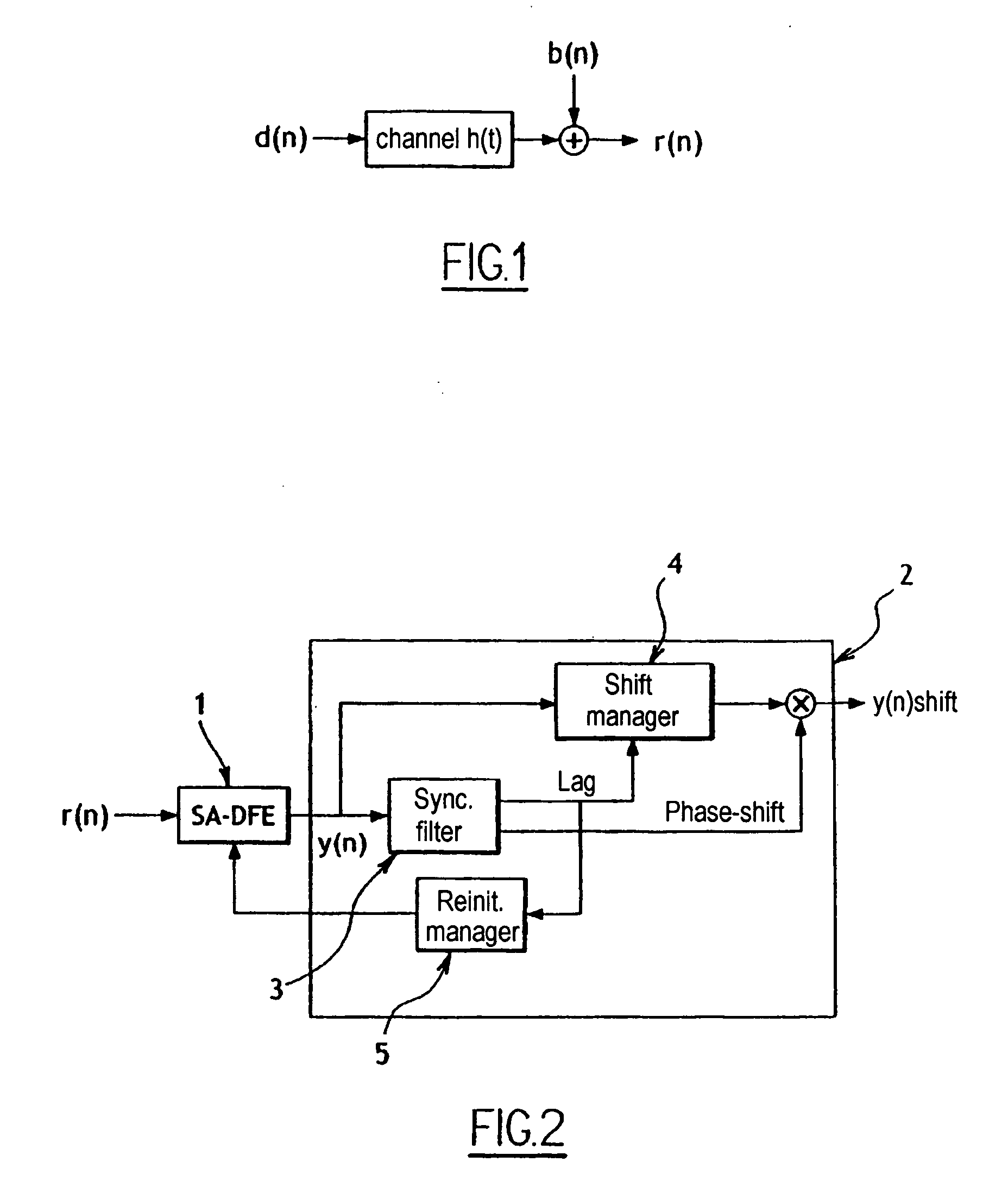Method for synchronizing an equalizer output data
a technology of output data and equalizer, which is applied in the field of synchronizing output data from blind equalizers, can solve problems such as loss of timing phenomena, and achieve the effect of limiting the effects of timing loss and avoiding this drawback
- Summary
- Abstract
- Description
- Claims
- Application Information
AI Technical Summary
Benefits of technology
Problems solved by technology
Method used
Image
Examples
Embodiment Construction
)
General Description of one Embodiment
[0030]FIG. 1 shows an input transmission channel over which successions of symbols d(n) are sent.
[0031] The channel is symbolized by a transfer function h(t) and by noise b(n) added at the output of the transfer function.
[0032] At the output of this transmission channel, the resulting symbols r(n) are received and processed in a receiver that includes in particular means of the type represented in FIG. 2.
[0033] These means include in particular a blind equalizer 1 which receives at its input the symbols r(n), which are filtered beforehand, where applicable, and processor means 2 whose function is to process the data y(n) at the output of the equalizer 1 to limit the effect thereon of the loss of timing phenomenon.
[0034] The processing effected by the processor means 2 consists in: [0035] detecting, in the frames of symbols at the output of the blind equalizer 1, known sequences SYNCH inserted into the frames of symbols d(n) at regular inter...
PUM
 Login to View More
Login to View More Abstract
Description
Claims
Application Information
 Login to View More
Login to View More - R&D
- Intellectual Property
- Life Sciences
- Materials
- Tech Scout
- Unparalleled Data Quality
- Higher Quality Content
- 60% Fewer Hallucinations
Browse by: Latest US Patents, China's latest patents, Technical Efficacy Thesaurus, Application Domain, Technology Topic, Popular Technical Reports.
© 2025 PatSnap. All rights reserved.Legal|Privacy policy|Modern Slavery Act Transparency Statement|Sitemap|About US| Contact US: help@patsnap.com



